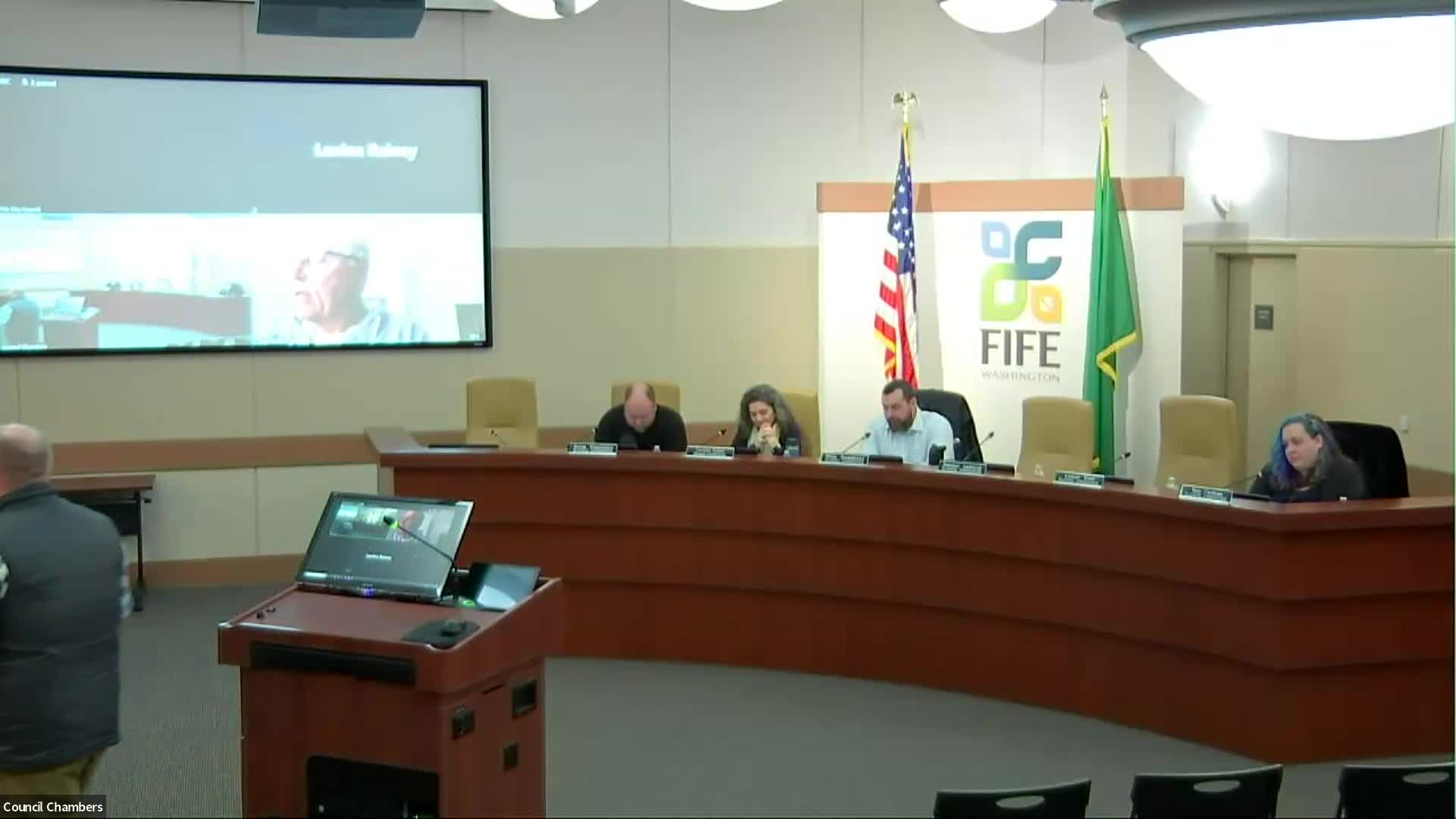Staff outlines remaining middle-housing code amendments required under state law
January 06, 2025 | Fife, Pierce County, Washington
This article was created by AI summarizing key points discussed. AI makes mistakes, so for full details and context, please refer to the video of the full meeting. Please report any errors so we can fix them. Report an error »

Senior Planner Taylor Jones gave commissioners an overview of remaining code work to comply with Washington’s middle-housing requirements, describing the scope, state deadlines and options for local implementation.
Why it matters: the state middle-housing law requires cities to allow additional housing types and to adopt specific code amendments by June 2025. Jones said Fife is a “tier 3” city (population under 25,000) and summarized the principal legal requirements and implementation choices.
Jones listed the principal requirements and remaining tasks: allow up to two middle-housing units per lot in predominantly residential zones; permit four middle-housing types in a two-unit configuration in those zones (duplex, stacked flats, courtyard apartments, cottage housing); add or update definitions (including low/medium/high density residential); allow 0-lot-line subdivisions where the number of lots equals the unit density; add an administrative design-review (ADR) definition and determine whether objective ADR standards are appropriate for middle housing; and add a code section clarifying statutory exemptions (for example, shoreline jurisdiction or other environmental constraints).
Jones told the commission the Department of Commerce publishes guidance and a model ordinance and warned that “if cities do not adopt code amendments that are consistent with the bill requirements by June of 2025, the entire model ordinance supersedes local regulations.” Jones said staff will return with draft code language and a menu of options — from adopting Commerce’s model ordinance wholesale to proposing a local hybrid approach — and that the most substantive decision will be whether to create objective design standards for middle housing.
Commissioner Dominique asked whether adding medium- and high-density residential definitions could be omitted; Jones replied this is mainly a code-cleanup item for consistency because the bill required a definition for single-family (now termed low density) and it is reasonable to provide definitions for other density categories.
Next steps outlined by staff: draft code language on administrative design review and other required amendments; review the Commerce model ordinance and updated guidance (released as recently as November); and return to the commission with proposals to consider before a June 2025 adoption deadline.
Why it matters: the state middle-housing law requires cities to allow additional housing types and to adopt specific code amendments by June 2025. Jones said Fife is a “tier 3” city (population under 25,000) and summarized the principal legal requirements and implementation choices.
Jones listed the principal requirements and remaining tasks: allow up to two middle-housing units per lot in predominantly residential zones; permit four middle-housing types in a two-unit configuration in those zones (duplex, stacked flats, courtyard apartments, cottage housing); add or update definitions (including low/medium/high density residential); allow 0-lot-line subdivisions where the number of lots equals the unit density; add an administrative design-review (ADR) definition and determine whether objective ADR standards are appropriate for middle housing; and add a code section clarifying statutory exemptions (for example, shoreline jurisdiction or other environmental constraints).
Jones told the commission the Department of Commerce publishes guidance and a model ordinance and warned that “if cities do not adopt code amendments that are consistent with the bill requirements by June of 2025, the entire model ordinance supersedes local regulations.” Jones said staff will return with draft code language and a menu of options — from adopting Commerce’s model ordinance wholesale to proposing a local hybrid approach — and that the most substantive decision will be whether to create objective design standards for middle housing.
Commissioner Dominique asked whether adding medium- and high-density residential definitions could be omitted; Jones replied this is mainly a code-cleanup item for consistency because the bill required a definition for single-family (now termed low density) and it is reasonable to provide definitions for other density categories.
Next steps outlined by staff: draft code language on administrative design review and other required amendments; review the Commerce model ordinance and updated guidance (released as recently as November); and return to the commission with proposals to consider before a June 2025 adoption deadline.
View full meeting
This article is based on a recent meeting—watch the full video and explore the complete transcript for deeper insights into the discussion.
View full meeting
